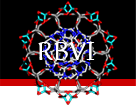

 about
projects
people
publications
resources
resources
visit us
visit us
search
search
about
projects
people
publications
resources
resources
visit us
visit us
search
search

Established in 1970, the Resource for Biocomputing, Visualization, and Informatics (RBVI) and its precursor, the Computer Graphics Laboratory (CGL), develops cutting-edge interactive software tools and advanced web-based computational resources that provide integrated visualizations and analyses of molecular structures and related non-structural biological information.
RBVI's tools can be applied to diverse types of biomolecular data, including atomic-resolution coordinates, 3D density maps and light microscopy data, and protein and nucleic acid sequences, annotations, and networks. We focus on unmet software needs for basic and applied biomedical research using highly trained and talented staff, with excellent interdisciplinary knowledge and specialized, state-of-the-art expertise in software engineering, computer visualization, and data science. Our primary efforts are in interactive visualization and analysis of structures of molecules and molecular assemblies, protein sequence-structure-function relationships, and network representations of protein similarity, binding interactions, and biological pathways. These areas are critical for addressing important biomedical problems related to health care and disease treatment and prevention.
Our Center's history dates back to the earliest application of molecular graphics.
We distribute the software tools we develop, including the popular ChimeraX visualization and analysis package.
The RBVI receives support from NIH grant R01 GM129325, the Chan-Zuckerberg Initiative, and from the University of California, San Francisco. RBVI and the CGL were an NIH Biomedical Technology Research Resource (BTRR) Center from 1970 until 2018.
About RBVI | Projects | People | Publications | Resources | Visit Us
Copyright 2018 Regents of the University of California. All rights reserved.